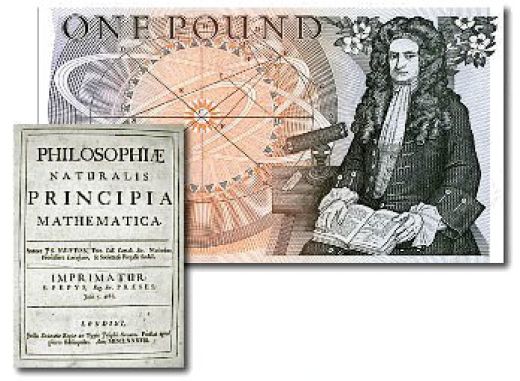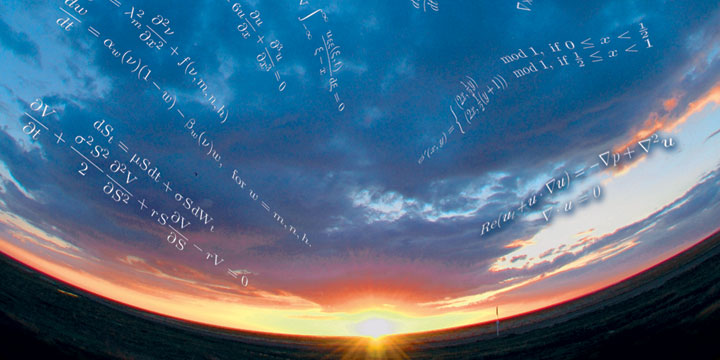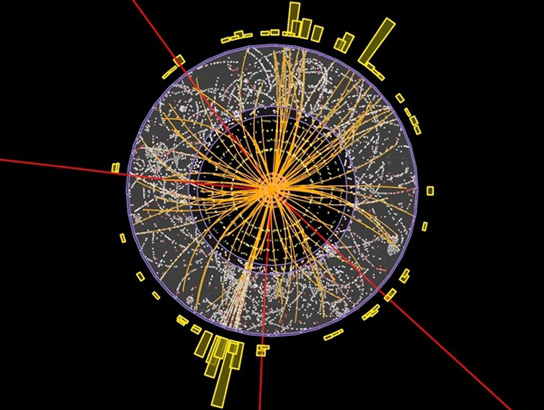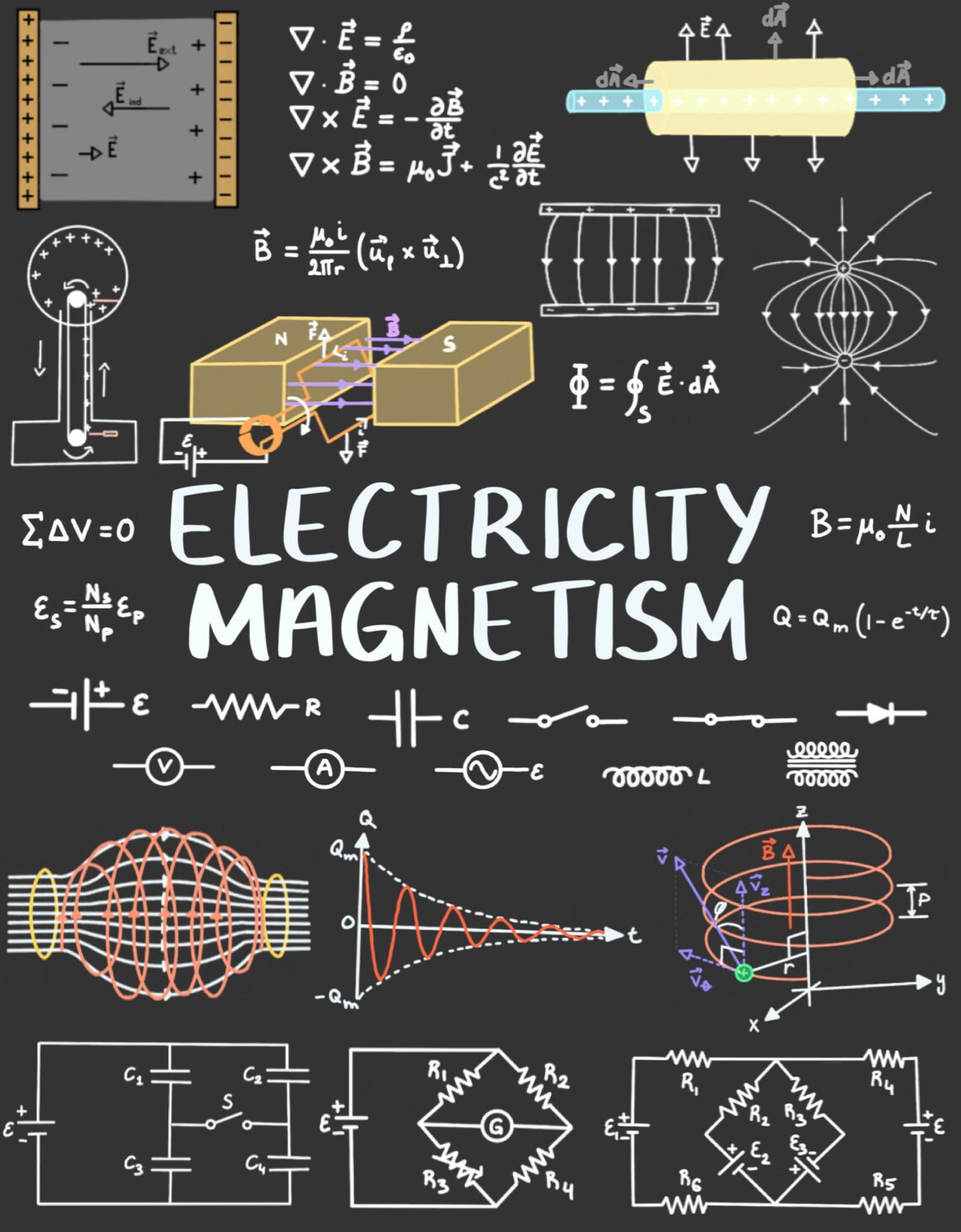|
Courses Summary
 | Thermodynamics and
Statistical Mechanics
This is an upper-division undergraduate
course on macroscopic and microscopic probabilistic approaches to
equilibrium properties of large numbers of degrees of freedom. Topics
covered include: thermodynamics, probability theory, kinetic theory of
gases,
classical statistical mechanics, interacting systems, quantum
statistical mechanics, identical particles, Bose-Einstein and Fermi-Dirac gases.
|

|
Classical
Mechanics
This is a shape modeling
course that teaches kinematics; vector analysis; conservation laws;
oscillations; rocket motion; variational methods; Lagrangian and Hamiltonian
mechanics.
|

|
Physics I (Calculus Treatment)
In this course we explore the foundations underlying our knowledge of
the physical world, with the goal of gaining an understanding of the
physical laws governing matter, energy, and physical (as well as
chemical and biological) phenomena. The course formally covers linear
kinematics and dynamics; rotational kinematics and dynamics;
conservation of energy, momentum, and angular momentum; gravitation; fluids;
oscillatory and wave motion; thermal physics.
|
 | Physics II (Calculus
Treatment)
This course is the electricity and
magnetism component to the introductory calculus-based physics
sequence. Topics include: electric force, electric field, electric
flux and Gauss law, electric potential, capacitance and DC
circuits, magnetic force and magnetic field, magnetic properties
of materials, Faraday's law of induction, Inductance, AC
circuits, displacement current, Maxwell's equations,
electromagnetic waves, geometric optics.
|
 | Modern Physics (Calculus
Treatment)
This course is a course on Modern Physics
for the introductory calculus-based physics
sequence. Topics include: special relativity, particlelike properties
of electromagnetic radiation, wavelike properties of particles,
Schrodinger equation, Rutherford-Bohr model of the atom, hydrogen
atom in wave mechanics, Klein-Gordon equation.
|

|
Astronomy, Astrophysics, and Cosmology
This is an introductory level course. Topics include: stars and
galaxies; distance measurements by parallax; luminosity and
brightness; surface temperature; HR diagram; distance to a star using
HR; stellar evolution; the Olbers paradox; the expansion of the
universe; homogeneous and isotropic Friedmann-Robertson-Walker
universes; the dark side of the universe; gravitational redshift;
energy density of starlight; lookback time; elementary particles; the
early universe; multi-messenger astronomy; quantum black holes.
|

|
Mathematical Physics
This course covers: complex analysis; ordinary differential equations;
initial value problem; boundary value problem; Fourier series and
Fourier transform; hyperbolic, parabolic, and elliptic partial
differential equations.
|

|
Elementary Particles
This course covers accelerators and detectors; special unitary groups;
quark model of hadrons; Feynman diagrams; electromagnetic, weak and
strong interactions of quarks and leptons; Higgs mechanism.
|

|
Conceptual Physics
There is a new urgency for wider segments of the
non-expert population to join in shaping the future direction of our
technological society. Certain decisions being made now in the
development of energy resources will profoundly affect the lives of
the next few generations. This course is oriented toward providing
an educational base for participating in these decisions. At this
level, there is no need for any mathematics beyond simple arithmetic,
nor for any previous knowledge of physics or chemistry.
|

|
Quantum Mechanics
This course covers the experimental basis of quantum physics. Topics
include: blackbody radiation, photoelectric effect, Compton
scattering, Bohr atom, de Broglie waves, waveparticle duality, and
Heisenberg uncertainty principle. Introduction to wave mechanics:
Schrodinger equation, wave functions, wave packets, probability
amplitudes, stationary states. Solutions to Schrodinger equation
in one dimension: transmission and reflection at a barrier, barrier
penetration, potential wells, the simple harmonic
oscillator. Schrodinger equation in three dimensions: central
potentials and introduction to hydrogenic systems. The Stern-Gerlach
experiment and two-state systems (probability, interference, and
entanglement). Identical particles: symmetry and asymmetry of the
wave function (fermions and bosons), Pauli exclusion principle,
helium atom.
|

|
AST-101
This course covers easy-to-understand summaries of many topics in astronomy, astrophysics, cosmology, and astrobiology.
The lectures delve into the story of astronomy, building up the picture of our Universe outward from Earth to the solar system to the Galaxy to the cosmology of the Universe. The course covers four broad subject areas: (1) Motions in the sky; (2) Stars: birth, life, and death (white dwarfs, supernovae, and black holes);
(3) Cosmology: from the Big Bang to the present day; (4) Life in the Universe.
|
 | General Physics II
This course is the electricity and
magnetism component to the introductory algebra-based physics
sequence. Topics include: electric force, electric field, electric
flux and Gauss law, electric potential, capacitance and DC
circuits, magnetic force, magnetic field, magnets, Faraday's law of induction,
electromagnetic waves, geometric optics, mirrors and lenses, special relativity, the relativity of electric and magnetic fields.
|
Teaching History
Lehman College, City University of New York
Spring 19
PHY 400 --
PHY 169
Fall 18
PHY 131 --
PHY 168
Spring 18
PHY 131 --
PHY 169
Fall 17
PHY 131 --
PHY 168
Spring 17
PHY 169
Fall 16
PHY 307 --
PHY 168
Spring 16
PHY 355 --
PHY 169
Fall 15
PHY 300 --
PHY 168
Spring 15
PHY 307 --
PHY 169
Fall 14
PHY 303 --
PHY 168
University of Wisconsin Milwaukee
Fall 13
PHY 501 --
Fall 12
PHY 501 --
Fall 11
PHY 541 --
PHY 735 --
Fall 10
PHY 517 --
Fall 09
PHY 209 --
PHY 541
Fall 08
PHY 209 --
Spring 08
PHY 209 --
Fall 07
PHY 411 --
PHY 209 --
Spring 07
AST 320 --
Fall 06
PHY 411
Northeastern University
Fall 05
PHY U145-02 LIFE SCI 1
|













